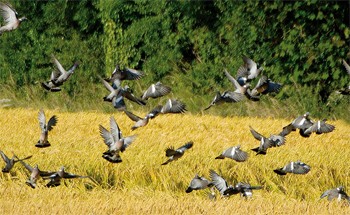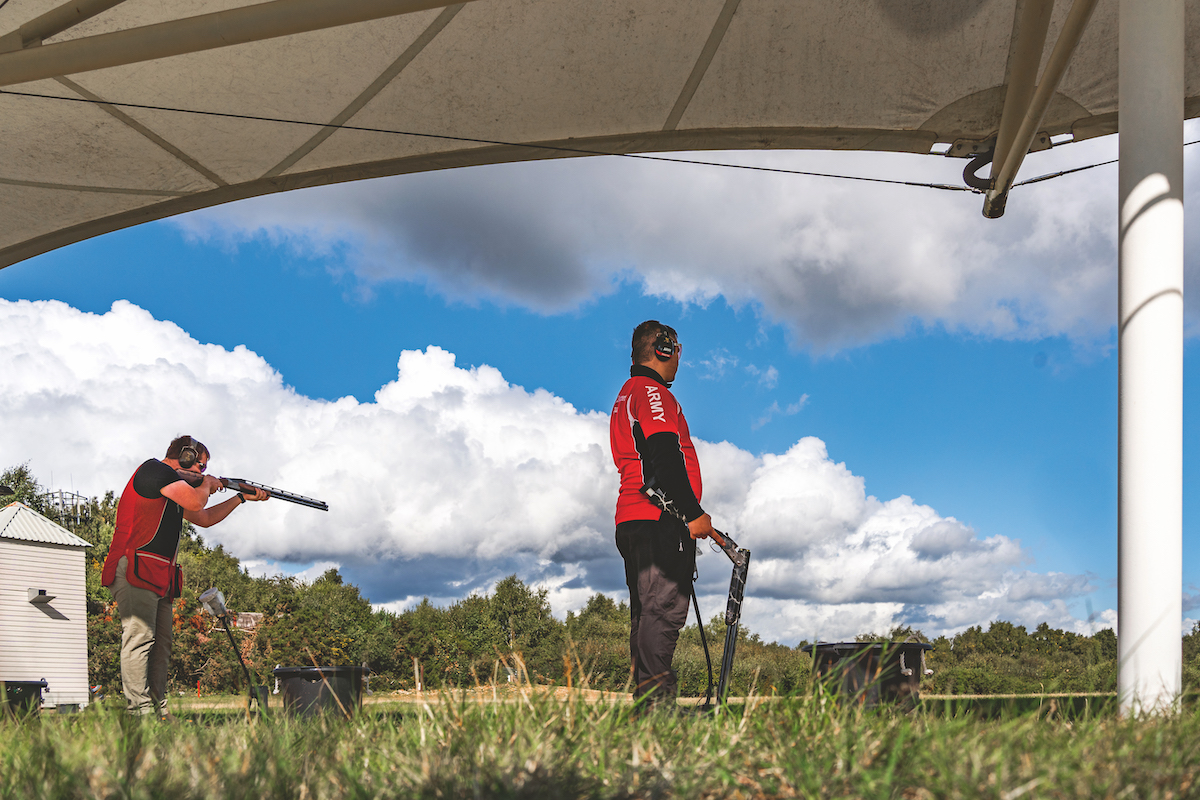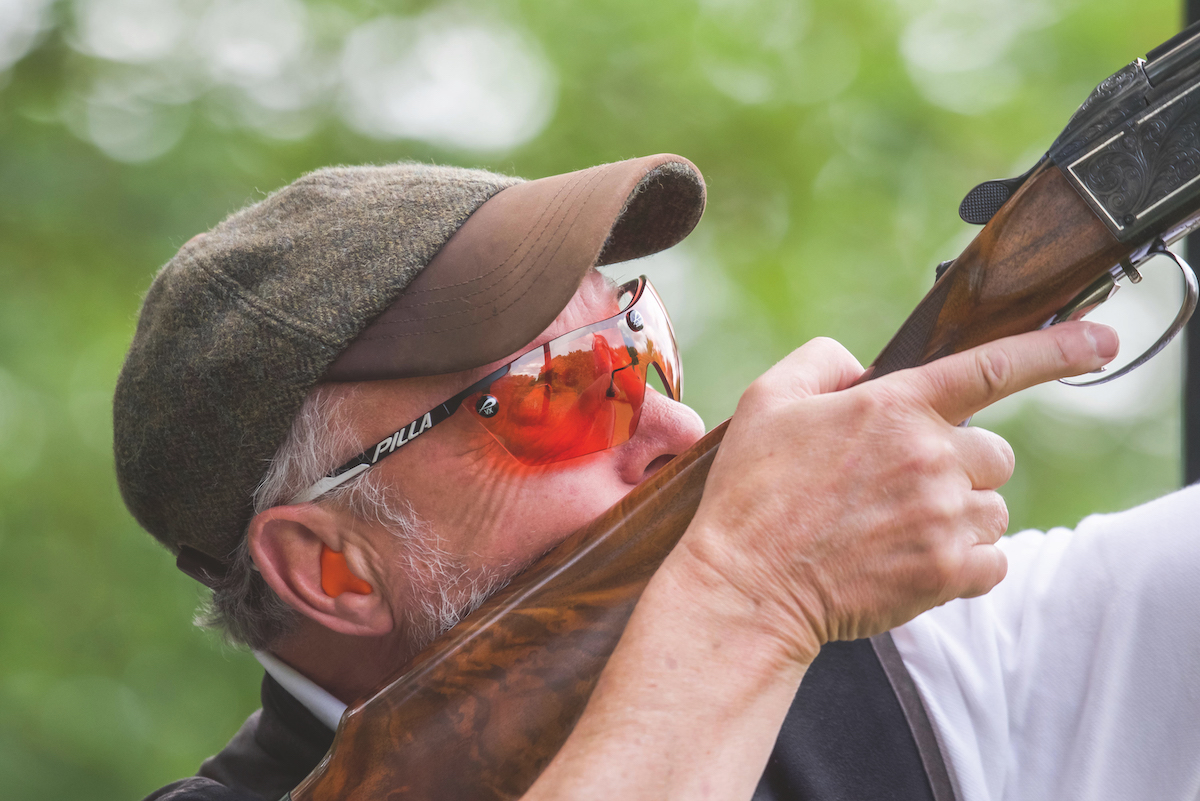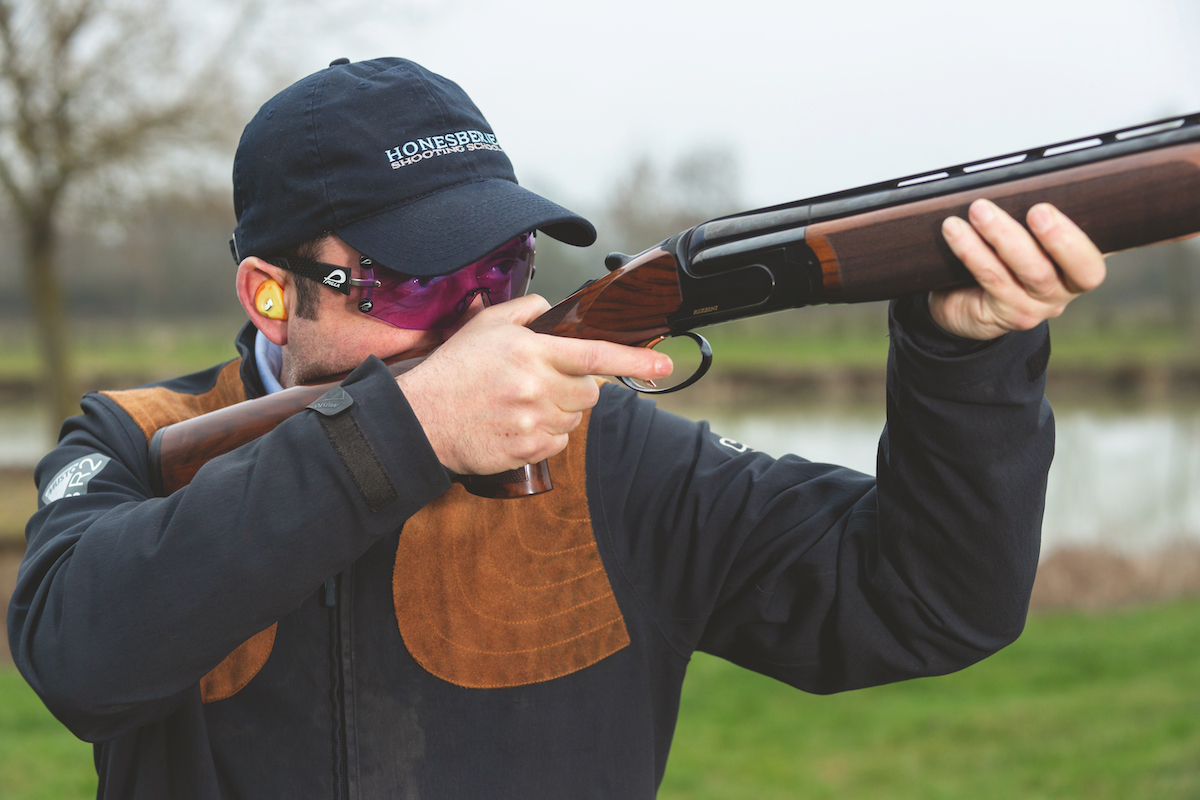Pigeon shooting over laid barley

Pigeon shooting over laid barley.
We were apparently due for much the same as yesterday, no wind to speak of, boiling hot, humid and oppressive, and with the odd thunderstorm likely to make life even more interesting.
Such is the British weather in mid-summer, but with the local woodies going mad on a strip of laid barley, it was just about everything you don’t want – plus a few extras thrown in for good measure!
Despite predictions, yesterday’s weather had in fact turned out pretty much ideal.
I’d been pulling my hair out watching the wind getting up from the workshop window.
There wasn’t even a spot of the forecast thundery rain. If only I’d ignored the Met Office.
But by then it was far too late to re-schedule, and after casting doubt on the parentage of weather forecasters in general, I turned my back on the window, vowed to go tomorrow for sure, and half-heartedly continued restoration work on a delicate antique case of grasshopper warblers.
Much as I love my work, there are limits.
With conditions great for decoying and a promising flock getting stuck in on the barely a couple of fields away, concentration was difficult to say the least.
Had I missed the best chance? Would the weather hold – or more importantly, would they suddenly clear off?
But frustrating as it is, if I ever lose that almost uncontrollable surge of excitement and anticipation, I’ll probably call it a day.
WASTING NO TIME
And this morning – well, sod the forecast – conditions were looking good! Bright and breezy, there was hardly a cloud in the sky.
The air certainly felt much fresher. Wasting no time in completing the daily chores, I bunged in the gear – including plenty of liquid refreshment – and scorched off to try my luck.
First job was to ‘flag’ a number of other bits of laid barley nearby, cutting down the alternative feeding sites which, if given the chance, the pigeons could easily switch to using after getting a noisy reception at the decoying ground.
Mid-afternoon, there’s nothing more frustrating than to see ‘your’ birds start disappearing over the skyline and drawing everything away to a safer feeding spot.
Anticipating this in advance – and doing something about it – often pays dividends by the end of the day.
NO URGENCY
At this time of the year, there’s no way of telling just what’s working a field when you arrive midmorning.
Many have been out for a very early feed in the coolness of dawn, and by the time temperatures rise most of these have drifted back to the woods to sit around digesting their breakfast in the shade.
With long hours of daylight and short, warm nights, there’s no urgency to stuff themselves silly.
Several odds and sods lifted from the verge along the way, obviously gritting, and a good sign they’re taking grain, but only a score or so scattered from the distant leafy tree-belt as I humped the gear along the hedge towards it.
A grand total of three birds actually took off from the laid bit! Hardly encouraging but hey, no worries.
Summer feeding rarely peaks until mid-afternoon, when good numbers had definitely been working the field.
Choosing a nice open spot just south of the tree belt, a known flightline, the nets went up in seconds against a small elder bush.
No problems with concealment in midsummer. Though still in full sunlight, a tall ash nearby would soon provide much needed shade until late in the afternoon.
Besides keeping cool, on such a bright day shooting from the shadows helps greatly with concealment.
Backing up a decidedly scruffy looking bird on the flapper – I’d need to replace that – were a team of half a dozen ‘smellies’ from the freezer.
I tidied the hide, clipped back the elder bush to open up a wider shooting area and filled the gaps with bracken, the gun close to hand in case anything drifted back.
It was a while before anything moved, and rather as expected, the first ones made for a clump of dead branches jutting through the top of an oak; an inviting drop-in point though right on the edge of range.
Frustrating, but eventually a single drifted past the front of the hide to join them, giving a nice fresh bird for the flapper. A lazy hour followed.
LAID AREA
Odd singles still drifted back to the vantage point on the oak, but now and again one passed close enough for a shot, easily taken as they slowed down ready for landing and glided in over the last few yards.
Luckily the laid area stretched well along the hedge, and the first easy pick-up gave a healthier looking pattern out front, a great improvement on the breasted carcasses that had been frozen, thawed out and re-frozen enough times to make their presence felt from several yards upwind.
With a nice bunch set and tidied, it was up to the pigeons now.
All I could do was hold the gun straight and make the most of what came along.
It was just in time. The few arrivals now suddenly began decoying well; a growing line from the east, with others sweeping over from behind.
Stalling as they spotted the group, most dropped back in against the wind to give easy, productive shooting. Whether or not it was due to the fresh decoys, they certainly wanted to be there.
Waiting until the final turn in over the edge of the standing corn I began to score well, with several textbook doubles quickly bumping up the bag.
When things go so well, there’s nothing I’d rather be doing, and nowhere I’d rather be than tucked up overlooking a field of decoys, and with such comfortable shooting in no time at all the half-century was notched up on the clicker.
Allowed to come right in, regular picking up was easy over the laid area, but despite picking my shots, inevitably, a few second barrel kills fell in the edge of the standing corn.
I’d do a careful sweep of the edges later to avoid trampling the crop.
There was no need – nor space – for more decoys.
Pigeons need a large, inviting landing strip, and the rest were stowed safely out of sight among a thick bracken clump where, though attracting flies, it was still surprisingly cool.
BELOW: Flagging off laid corn patches makes sense – it channels more birds to your decoy pattern.

Every carcass would need a careful check to remove eggs when safely back in the game larder.
Mid-afternoon, and the barrels really warmed up as a new line developed from the north.
A narrow line, straight and deliberate, came in low over the corn, almost all singles.
They were definitely in feeding mode, and every bird knew exactly where it was going, totally ignoring the steady crack of the 28-bore.
CHANGE OF FORTUNE
It was a fantastic couple of hours, but nothing lasts, and as the temperature soared both lines tailed off noticeably, the flight finally reduced to little more than an odd drifter floating rather aimlessly around.
The reason was obvious.
A noticeable drop in the wind had left the air heavy and humid, and like a turning tide, when the breeze eventually picked up again later it was from the completely opposite direction, bringing a change of fortune – and any arrivals now came from behind sneaking in unseen over my right shoulder.
An easy job had become difficult, bringing home just how important it is to site the hide and decoys correctly.
It also brought my averages down with a jolt.
BELOW: A combination of flags, flappers and a few decoys ensured Richard enjoyed a great day’s sport.

With the decoys close in to the hedge, birds from behind now often overshot the runway, and the long range, going away, lifting and falling bird is certainly not my favourite type of shot.
Several kept going, with only an odd bird or two circling back in to have a closer look.
The best was over – but too late to matter.
I’d had a fantastic few hours but a storm was coming!
BELOW: Not a bad result considering Richard only decided to go shooting at the last minute and leave the work until tomorrow!

Clouds were already stacking up to the west and faced with a long search – and an even longer haul to the truck with over a hundredweight and a half of woodies – it was time to get going.
With thunder rumbling in the distance, it’s surprising just how fast you can move under a heavy load, and I got home dry.
It chucked it down all evening, but who cares!








